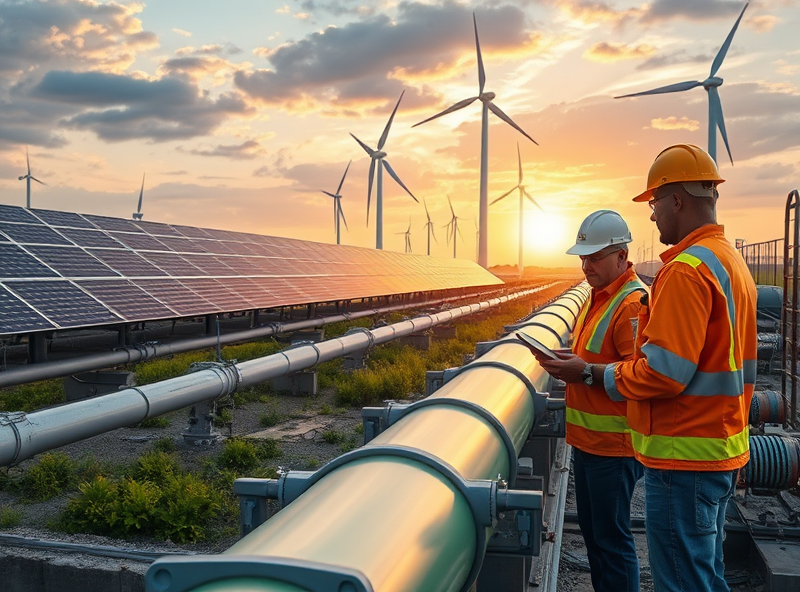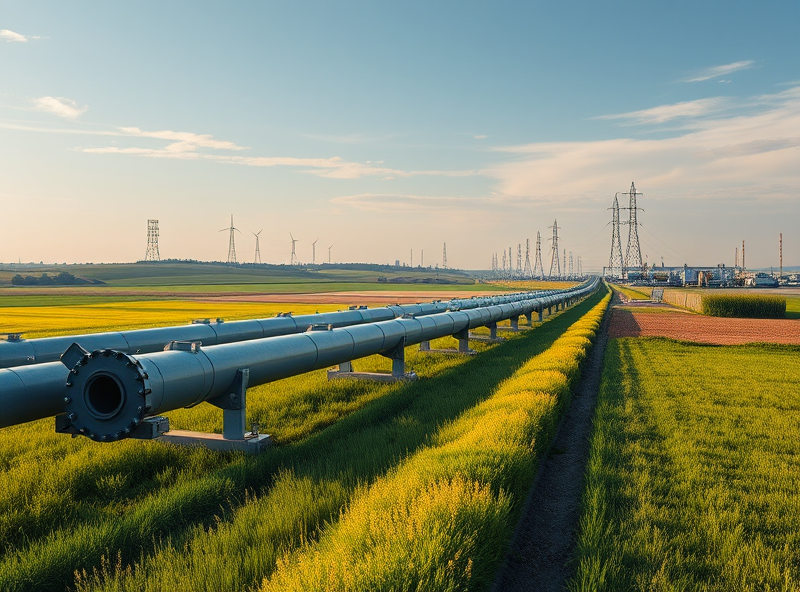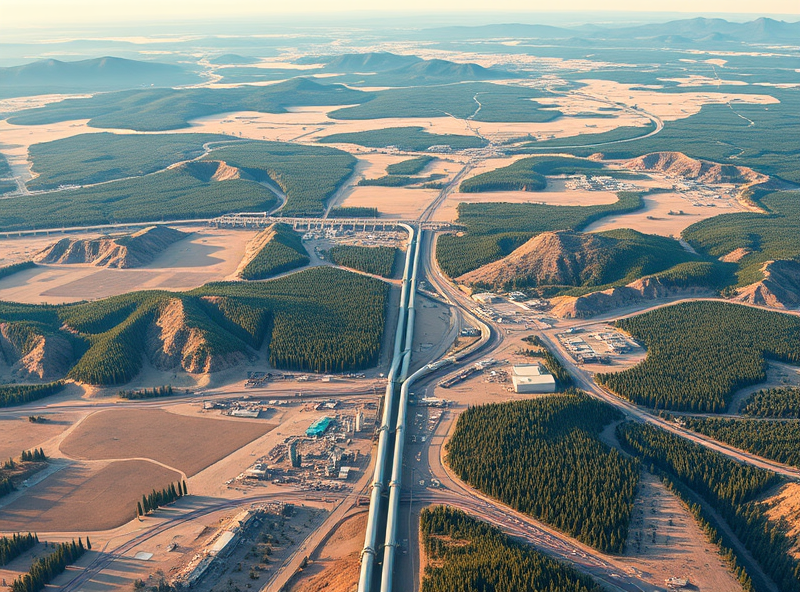
Williams Companies’ Natural Gas Strategy in the Clean Energy Era
Adapting to Regulatory Shifts: Navigating Federal Energy Policies

As the clean energy transition accelerates, natural gas companies like Williams Companies are navigating a complex and evolving regulatory landscape. Understanding and adapting to federal energy policies is not just a compliance issue—it’s a strategic imperative for long-term sustainability and growth.
In recent years, U.S. federal energy policies have increasingly emphasized decarbonization, methane emission reductions, and investment in renewable infrastructure. For companies like Williams, which operates one of the largest natural gas infrastructure networks in the country, this means aligning operations with the Biden administration’s climate goals, including net-zero emissions by 2050.
One key area of focus is methane regulation. The Environmental Protection Agency (EPA) has proposed stricter rules to reduce methane leaks from oil and gas operations. Williams has responded by investing in advanced leak detection technologies and committing to transparent emissions reporting. These efforts not only help the environment but also enhance the company’s reputation with investors and regulators.
Another regulatory shift involves the Federal Energy Regulatory Commission (FERC), which is increasingly factoring in climate impacts when approving new pipeline projects. Williams has adapted by conducting more comprehensive environmental impact assessments and engaging with local communities earlier in the project lifecycle.
To stay ahead, Williams is also exploring opportunities in carbon capture and hydrogen blending—technologies that align with federal incentives under the Inflation Reduction Act. By proactively engaging with policy changes, Williams is positioning itself as a resilient and forward-thinking energy provider.
For energy professionals and investors, understanding how companies like Williams adapt to regulatory shifts offers valuable insights into risk management, innovation, and sustainable growth in the energy sector.
For more on current federal energy policies, you can visit the U.S. Department of Energy’s official site: https://www.energy.gov/policy-office
Smart Investments: Powering the AI Boom through Infrastructure Expansion

As artificial intelligence (AI) continues to reshape industries, the demand for energy-intensive data centers and computing infrastructure is skyrocketing. This surge is driving a renewed focus on reliable, scalable, and cleaner energy sources. Williams Companies, a major player in natural gas infrastructure, is strategically positioning itself to meet this demand by expanding its pipeline networks and investing in low-emission natural gas solutions.
Natural gas plays a critical role in supporting the AI revolution. Unlike intermittent renewable sources, natural gas provides a stable and flexible energy supply that can power data centers 24/7. Williams is leveraging this advantage by modernizing its infrastructure to reduce methane emissions and improve energy efficiency, aligning with federal clean energy goals.
In addition, Williams is making smart investments in regions with high AI infrastructure growth, such as Texas and the Southeast U.S., where cloud computing and semiconductor manufacturing are booming. By ensuring a steady flow of natural gas to these hubs, the company is not only supporting the digital economy but also creating jobs and boosting local economies.
For those interested in how energy infrastructure is evolving to support the AI era, Williams’ strategy offers a compelling example of how traditional energy companies can adapt and thrive in a low-carbon future.
You can read more about Williams’ sustainability initiatives on their official site: https://www.williams.com/sustainability/
Pipeline Power: Williams’ Market Reach and Operational Capacity

Williams Companies has strategically positioned itself as a key player in the U.S. natural gas infrastructure, operating one of the largest and most reliable pipeline networks in North America. With over 30,000 miles of pipelines and significant access to major shale basins like the Marcellus, Utica, and Haynesville, Williams ensures efficient transportation of natural gas from production sites to high-demand markets, including the Northeast, Southeast, and Gulf Coast.
This expansive network not only supports domestic energy needs but also enhances energy security and affordability by reducing bottlenecks and ensuring consistent supply. As the clean energy transition accelerates, natural gas remains a critical bridge fuel, and Williams’ infrastructure is essential for integrating renewable energy sources by providing backup power and grid stability.
Williams is also investing in modernization and emissions reduction, including methane leak detection and carbon capture initiatives. These efforts align with federal clean energy goals and position the company as a forward-thinking leader in sustainable energy infrastructure.
For more on Williams’ infrastructure and strategy, you can refer to their official site: https://www.williams.com/operations/natural-gas-pipelines/
Financial Resilience: Capital Growth and Strategic Forecasting

In today’s evolving energy landscape, Williams Companies is demonstrating strong financial resilience by aligning its capital growth strategies with long-term energy transition goals. At the heart of this approach is a commitment to stable cash flows, disciplined capital allocation, and strategic forecasting that anticipates regulatory and market shifts.
Williams has maintained a robust balance sheet by focusing on natural gas infrastructure—an energy source increasingly recognized as a bridge fuel in the clean energy transition. Their investments in pipeline expansions, LNG export terminals, and low-emission technologies are designed not only to meet current demand but also to future-proof their assets. This strategic foresight allows the company to deliver consistent shareholder returns while supporting decarbonization efforts.
Moreover, Williams employs scenario-based financial modeling to anticipate various policy and market outcomes. This enables them to make informed decisions about capital expenditures and dividend policies, ensuring financial stability even in volatile conditions. Their ability to forecast demand trends and regulatory changes—such as methane emission standards or carbon pricing—helps them stay ahead of the curve.
For investors and energy professionals, Williams’ strategy offers a blueprint for balancing profitability with sustainability. Their financial resilience underscores the importance of aligning infrastructure investments with long-term energy policy and market dynamics.
For more on Williams Companies’ financial performance and strategic outlook, you can visit their official investor relations page: https://investor.williams.com






